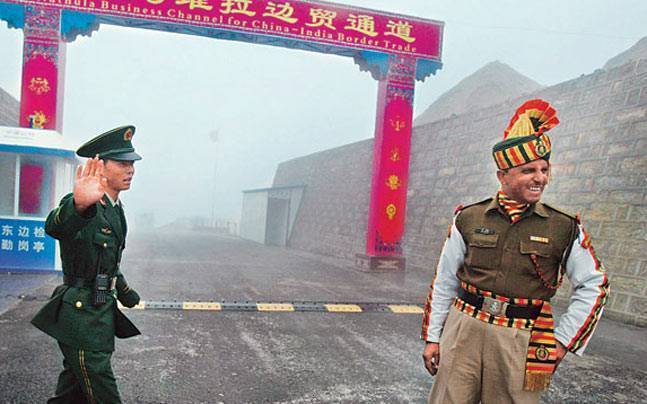Ever since the ongoing Sino-India military standoff started in Eastern Ladakh along the Line of Actual Control- the effective India-Tibet (China-controlled) border, there have been speculations about how the conflict could get widened in no time. Time and again references have been made to the Sino-India border in Arunachal Pradesh. Ladakh and Arunachal Pradesh (then NEFA) were the two main theatres that had got activated during the Sino-India war in 1962.
China claims India’s state of Arunachal Pradesh and calls it ‘South Tibet’ and therefore there have been murmurs about how the Eastern Ladakh standoff could create tensions on the Eastern part of the Sino-India border also. But the ongoing standoff hasn’t really stretched into Arunachal Pradesh. The Chinese People’s Liberation Army (PLA) remains reluctant to activate the Eastern front primarily because India has a major strategic advantage over China on the Arunachal border with China.
According to ET, India has enhanced its preparedness along all the “six disputed areas” and “four sensitive areas” in Arunachal Pradesh which had got activated during the 1962 war. A top defence source told ET, “Four of the disputed areas are in Asapila, Longzu, Bisa and Majha in Upper Subansiri district where the Chinese PLA has already built a road through Bisa from one point of the LAC to another.”
But India has a big advantage in the Asapila sector. The defence source added, “China claims the entire Asapila sector as its territory and it is a disputed area. This high-altitude area is a difficult position for both the Chinese and Indian armies and Chinese PLA cannot afford to occupy this area, especially during the winter. They will be cut off for nearly six months.”
India enjoys an even bigger advantage in the other two disputed areas- Tulung-la and Yangtse located in the Tawang district of Arunachal Pradesh. These two districts were the epicentre of the 1962 Sino-India war and therefore remains tactical hotspots. Now, India is in the occupation of these strategic areas, as the Chinese PLA had completely withdrawn from the erstwhile NEFA, unlike Ladakh after the 1962 war.
Moreover, India has been constructing robust road infrastructure that will boost connectivity to the disputed points on the Sino-India border in Arunachal. In 2017, India, the Borders Road Organisation (BRO) started constructing two tunnels across the inhospitable Sela Pass located at an altitude of 4,170 metres. Speaking about the tunnel project, Arunachal Pradesh Chief Minister Pema Khandu recently said, “Happy to notice the work progress, all work will be completed by end of 2021.”
The tunnel project is going to cut down the road distance to the China border via Tawang by 10 kilometres. Moreover, the travel time between Tezpur, where the Indian Army’s 4 Corps headquarters are located, and Tawang would also be cut down by about one hour.
More importantly, the Sela Pass tunnel project will make the 171-km Bomdila-Tawang stretch of the National Highway-13 that connects Wakro and Tawang an all-weather road, allowing Indian troops to access the China border round the year. Frosty winters will no longer curtail India’s bid to mobilise troops, ammunition and equipment at the China border through Tawang.
China is already getting a bloody nose from the Indian Army troops in Eastern Ladakh, but the Chinese PLA knows that it will face even more setbacks if military tensions stretch into Arunachal Pradesh. China feels that the disadvantage it faces in Eastern Ladakh is not as damning as the one it faces in Arunachal. Therefore, the PLA is dragging the standoff in Eastern Ladakh while consciously avoiding any escalation near Arunachal Pradesh.
